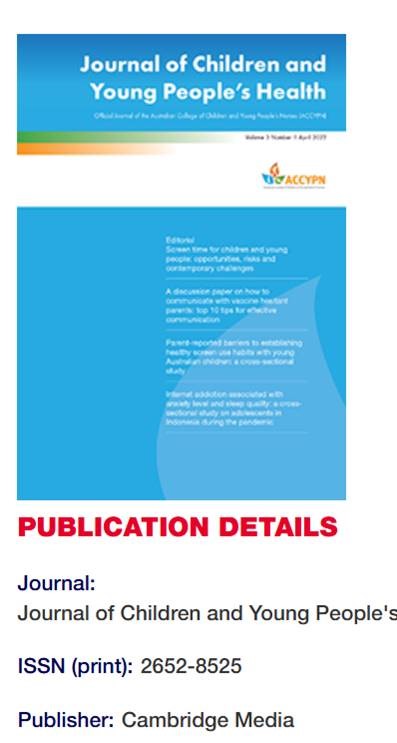Anita Moyes*
RN, PhD
Edith Cowan University, WA, Australia Email A.Moyes@ecu.edu.au
Elizabeth Rankin
RN. RM. Grad.Cert Nurs
South Australian School Nurses Association, SA, Australia
Chelsey Williams
B.Sc (Nursing), Grad.Dip Mental Health Edith Cowan University, WA, Australia
*Corresponding author
Abstract
Background
School nurses provide health care to children and young people in the school setting. Little has been published about school nursing in Western Australia, highlighting a pressing need to establish a comprehensive list of research priorities to address the knowledge gap.
Methods
This study employed a four step Nominal Group Technique to explore school nursing priorities from the perspective of expert school nurses working in non-government schools in Western Australia. Five nurses with more than 60 years of school nursing experience collectively generated more than 60 research ideas using this approach, subsequently grouping these into key areas through facilitated discussion and group consensus.
Findings
Priority research issues were strongly inter-related and primarily reflected school-level professional concerns which impact school nursing practice. The findings highlighted that nurses want greater opportunity to practice to their full scope, be acknowledged for school nursing work, to have improved professional identity as a school nurse and to be positioned as a leader in student health and well-being.
Conclusion
Expert school nurses want to understand how school leaders perceive the role and contributions of the school nurse. This insight is crucial in improving the visibility of school nursing work and may contribute to addressing the professional issues identified in the study.
For full text version refer to the Journal of Children and Young People’s Health.


